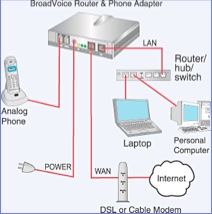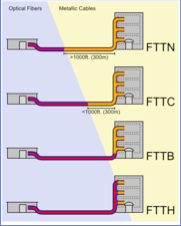See our current COURSE LISTINGS here.
Please note that we typically can alter many aspects of existing course content or can create new courses outright. Pricing is variable due to the length, location and number of students, and the exact requirements you want to address. Please Contact us and we will work with you to develop a competitive quote.
- GTD-5® EAX
- DCO®
- 5ESS®
- Inter-switch trunk turn-up between Nortel DMS®, GENBAND/Siemens/Stromberg-Carlson® and NEC®
- Inter-switch linking to STP supported by Nortel® and Ameritech devices
- Network concepts such as the ISO model, important layers such as physical, data link, network, transport/TCP/IP, etc. plus routers, switches, Cisco IOS, subnets, NAT, protocols like RIP, EIGRP, IGP, EGP, OSPF, etc. to prepare for Cisco® Certification
- Network security including firewalls, interface configuration, VPN, passwords, etc.
- ATM, SONET, H.323 and other telecom protocols
- Operating systems and productivity software for Microsoft® MS-DOS through Windows 8.1, Apple® OSX Power PC through Mountain Lion, Sun®/Oracle® Solaris 7 through 10
- UNIX-based shells and basic scripting skills
- HTML, XML and CSS
- Various legacy utilities needed to support existing plant
We have also found that certain skills are never trained -- like how to troubleshoot. Curiously, many technicians are thrown into training and then at its conclusion, are assumed to be master problem-solvers. As discussed in our Support page, troubleshooting is a multi-faceted skill that requires experience and direction. So, we also offer the following training:
- Troubleshooting Techniques
- Critical Thinking
Planning Your Training
We know a lot of our current and potential clients like what they see, but with training budgets shrinking over the last decade, it can be difficult to justify expenses of any kind. We understand your concerns. Please consider the following advantages when using our training. What would these advantages be worth to you?
- What if we could improve your average employee's productivity by just 10%? What about 50%?
- What if each employee became a better overall trouble-shooter, no matter what equipment they worked on?
- What if we could offer you high quality training by coming to your premise, relieving most travel costs?
- What if we could reduce the training time by 50 to 70%?
Telecom training is traditionally a time-consuming and expensive investment. We have worked very hard to change that. For a fraction of past training costs or a typical annual salary, we can give your students the tools and practice they need to become significantly more competent in their skills, helping them and customers. When business-casing training, remember that there is also a cost to not giving them this advantage.
We would be happy to hear your particular concerns and needs and design a course that targets those. Let us know.
Telecom has undergone some major financial changes and we have all been pressed to be more productive. So, we also can incorporate an original concept in the telecom industry if desired -- adjourn class to work in a maintenance window and fix an actual problem or work on an existing upgrade. This is quite sensible from many perspectives: An online environment is where your employees are going to work -- train them there so they do not adapt reckless procedures obtained from only training within a class or captive switch environment. The best learning occurs when fixing real problems, not in a classroom with 5 students looking over the shoulder of one, trying to "absorb" information. And of course, you get work performed at the same time as some training. Now that's being productive.
Not sure if you want to train in the real switch room? No problem -- we offer you a choice of training in our training switch environment or in an offline setting at your premise with realistic examples. The nature of the learning materials is identical. And there are even other, hybrid options such as using equipment you may already be planning to regrade or turn-down. Ask us and we can provide some interesting options that you may not have been aware of.
Quizzes are given in a challenging but friendly way, to help build confidence. Employees with different backgrounds and skills have their training adjusted to suit what they may already know. We never skip important concepts just because "most" of the class already seems to understand them.
Then there are the materials themselves.
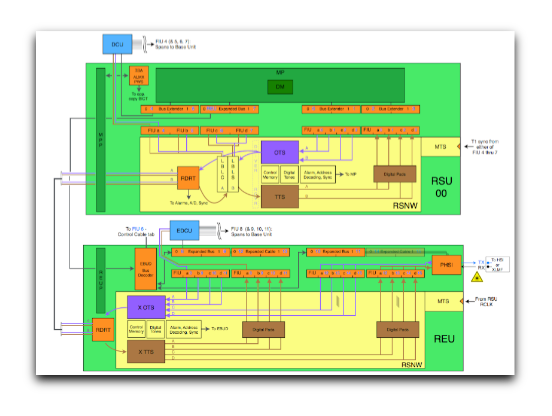

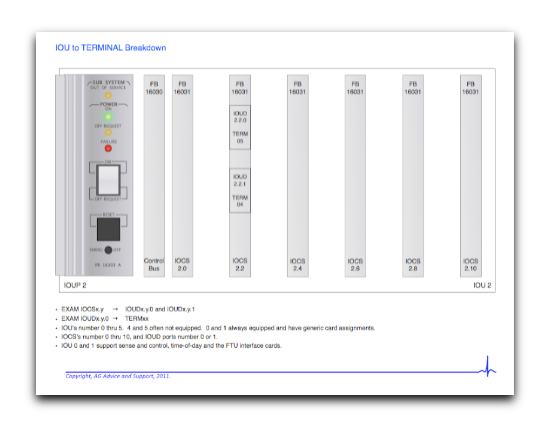
We know from experience what your people will probably need to know and what they probably won’t, so we also add some of those little SME-like tidbits that might come in handy.
Student materials are designed and intended to be used over and over for easy look-up in the future, and usually include a mandatory segment, optional steps, and an on-page glossary of when and why the optional steps would be helpful. Color, font, space, pictures, and other print techniques are used to help keep the information distinctive and interesting. We also provide you a laminated copy of the training guide so you always have a readable copy which your dog cannot eat.

For example, you may already have a trouble-shooting GUI that tells you which card is bad and where it's located, any maybe even how to change it. Then again, it may be necessary to break a switch message down into it's machine-code segments and decode them from their hexadecimal, BCD, binary or octal formats. Hex truth tables are a little bit like using slide-rulers -- using them is a waning skill. Yet you might still need to use them.
Perhaps you need to envision a complicated concept, to help see the big picture. We like using interesting and unique visuals to enhance concepts that are difficult, or even those which are understood in principle but which are rarely seen "from 30,000 feet". Here's one -- the internet:
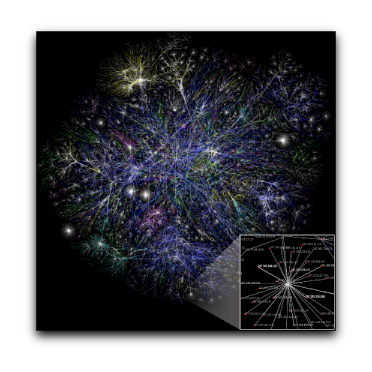
A partial map of the internet, by Matt Britt via Wikipedia.
This is a demonstration of graph theory, where longer lines
indicate the delay between two nodes, and not necessarily
distance. Colors indicate different types of nodes, such as
government, education, private, etc.
full size

